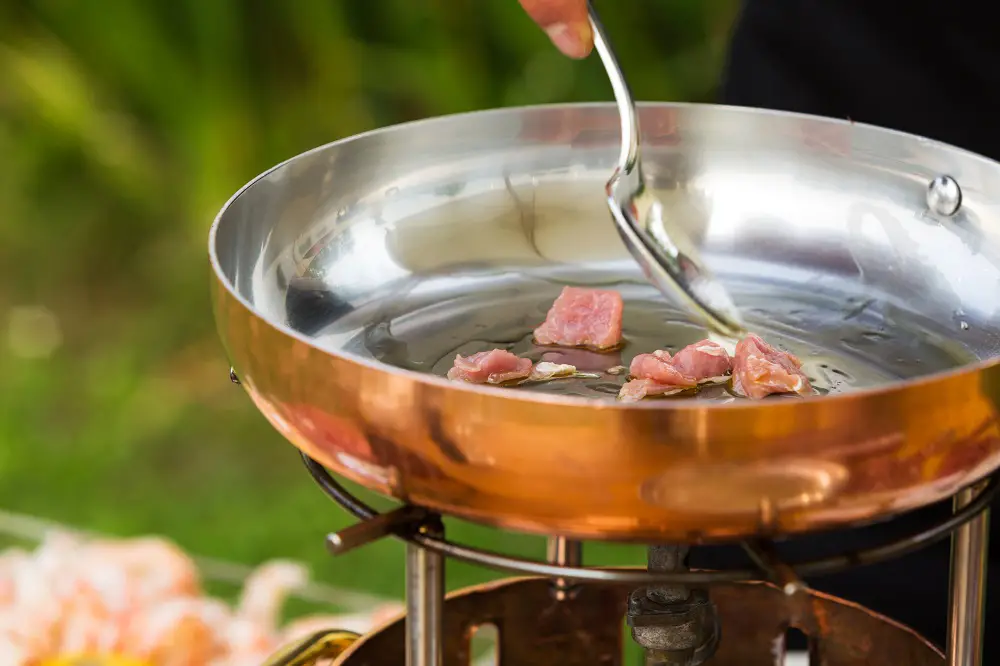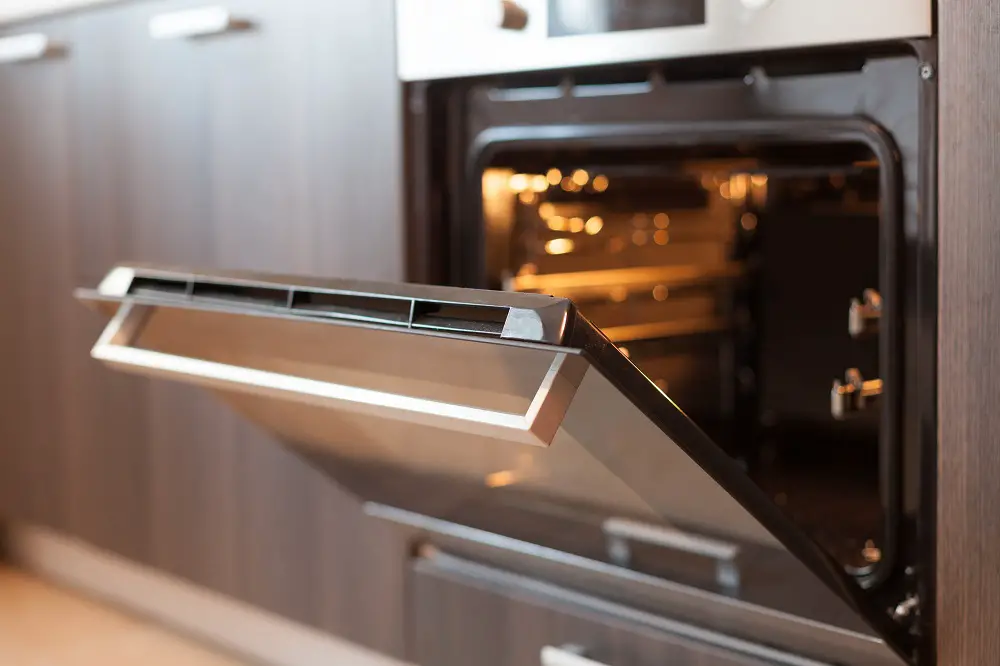
Pots and pans that are made out of copper can be a beautiful addition to your kitchen, but if you don’t know how to cook in copper cookware or care for it, then you may be hesitant to take the plunge and invest in a good copper cookware set. I’ve included some great cooking tips that will help you learn how to get the most out of this type of cookware, and how to care for it, and the do’s and don’ts of using copper.
There are many benefits that come with cooking with copper, but in the beginning, you’ll need to learn about the basic do’s and don’ts and what you’ll want to avoid cooking in this type of cookware, the temperatures to avoid, and what type of dishes you can create. Now, let’s get started learning about the many benefits of copper and how it can be a huge help in the kitchen.
Many cooks will purchase copper cookware, but they’ll hang it on the walls or pot rack, just for decorative purposes. But there are many benefits that come with cooking with copper. For starters, it’s a high-performance metal.
It offers more consistent results and faster cooking times due to the quick response and even heating of copper. Since the pan cooks faster and heats up quicker, you’ll need to have your ingredients prepared and ready for the pot or pan.
Table of Contents
Temperatures
Cooking at a precise temperature can be tricky with any type of cookware, but this is actually where copper cookware shines.
Unlike other types of cookware materials, you don’t have to always cook at high heat. Instead, try using medium heat. As I mentioned, this material heats up very quickly. When the stove is set on medium heat, it will help you learn more about the idiosyncrasies of your cookware, without worrying about damaging it by cooking at a temperature that’s higher than necessary.
The Right Cooking Utensils
In high-priced copper cookware you’ll find a tin lining. Tin is a very soft material. In order to avoid scratching it, you’ll need to use silicone or wooden cooking utensils only.
No Preheating Needed
Because copper does such an excellent job of conducting heat, it will heat up very quickly. The delicate lining of the pots and pans can melt in under sixty seconds, so if you’re going to turn on the burner, make sure that you have some type of food in the pan, even if it’s just cooking oil or butter.
If you happen to get distracted, the butter or oil in the pan will start to smoke right before the lining begins to melt, which will grab your attention, allowing you to remove the pan or pot from the burner before the lining begins to melt.
Don’t Sear Foods in Copper Cookware
The lining in this type of cookware can melt at around four hundred and fifty degrees. Avoid using this type of cookware to sear meat on high heat. Instead, go with stainless steel, aluminum, or cast iron.
Oven Use

Using copper cookware in the oven, even at high temperatures shouldn’t be a problem. The water in the food will keep the temperature of the cookware at around two hundred degrees until the water has evaporated.
Don’t Scrub
If you’re dealing with cooked on food, don’t scrub the pot or pan. Instead, try filling the pan or pot with some water and a little dish soap, then allow it to simmer for ten to fifteen minutes. You’ll be impressed with how easy it cleans up. There are other methods you can try if you’re dealing with some tough baked on food. To learn more, click here to read my guide on how to clean copper cookware.
Polishing Copper
If you don’t polish this type of cookware for several months, then you’ll be in for a real workout. This type of cookware must be polished often, at least once a month. Polishing it frequently will keep your cookware looking display-worthy and will only take a few minutes of your time if you do it often.
Did you know you can even make your own copper polish? Many pros use the following recipe to keep their cookware looking great.
Mix one tablespoon of salt with half a cup of white vinegar. Next, add half a cup of baking soda to make a paste. After you wash your cookware, use a paper towel and dip it into the polish and wipe down the cookware. Wash off the polish with soap and water.
Where Not to Hang Your Cookware
Avoid hanging your cookware on a rack above the stove. The grease and steam that spatter will make a huge mess and can potentially ruin your cookware. It will also make polishing a real hassle. Instead, hang the cookware over an island or another spot away from the stove.
Change Out the Lining
If your cookware has tin lining, then you’ll need to stay on top of replacing it if it becomes damaged. Over time, the lining will change color and become darker, depending on what type of food you cook in the pan.
Resist the urge to polish it, since it can damage the tin. When the tin lining becomes damaged, it will need to be replaced promptly since it can allow small amounts of copper to leach into your food. This isn’t dangerous, but it can have a major negative impact on the taste of your food.
What to Cook in Copper
Copper isn’t just beautiful, it’s actually safe to cook with and provides some pretty impressive results. As I mentioned earlier, it’s excellent at conducting heat and does well with even heat distribution, so you can cook a wide variety of foods, including delicate dishes.
These pots and pans will heat up quickly and stay warm, providing the type of uniform cooking that pros look for in their cookware. This means no more scalding or burnt spots. You’ll have excellent control over every dish.
Copper pots are often used to prepare salted caramel sauces, jams, and risotto. They’re also perfect when it comes to preparing dishes that involve precise heat control and changes in temperature. As long as the cookware is lined with stainless steel, aluminum, or tin, then it can be used to prepare a wide variety of dishes. However, don’t forget that this cookware will heat up and cool down quickly.
Boiling
Since copper can heat up rapidly, it’s also able to boil water quickly. It’s perfect for boiling root veggies that take a long time to soften, or pasta or eggs. When used for boiling, some people will add salt to give the food a stronger taste.
Steamed Food
Because steaming involves boiling water, food that’s prepared using this technique can take a lot of time, which is why copper is often the best choice. This is because it heats up the water rapidly and can produce more steam.
Braising
When you braise meat you’ll cook it with a little liquid such as juice or wine until it’s tender. Braising can be done with an uncovered or covered pot. The goal when you braise food is to cook it while leaving enough moisture in the food to keep it full of flavor. Copper cookware is a great choice for this technique because it distributes heat evenly. This will prevent overcooking the sauce.
Sautéing
This process involves dry cooking food in a pan that’s very hot with a little butter or oil added to it. When you sauté, you must continuously move the food around so that it doesn’t remain in contact with the pan or pot for a long time. This will brown the food’s surface and allow it to release its aroma and flavor. Because this kind of cookware can produce even heat, there will be no issues with uneven cooking, food that’s undercooked, or raw food.
Final Thoughts
While learning how to cook in copper cookware may sound simple, it can actually be pretty complicated, since there are a lot of do’s and don’ts that you need to keep in mind when you’re first learning how to use it. In the past, this type of cookware was more popular in industrial kitchens, but these days, it has begun to invade home kitchens.
The reasons for this are clear, they allow the user to have more control over the cooking process, the cookware can provide perfect results when you’re preparing delicate dishes, and the cookware just looks great in any kitchen. Over time, and by following the tips I’ve included here, you should have no problem cooking like a pro with this cookware, turning out perfect results and food that’s cooked evenly and quickly.
Originally posted 2020-06-23 08:37:11.


![7 Best Island Punch Pucker Substitutes [ALMOST Identical]](https://wowcookery.com/wp-content/uploads/2022/05/island-punch-pucker-90x75.jpg)
![10 BEST Luxardo Bitter Bianco Substitutes [ALMOST Identical]](https://wowcookery.com/wp-content/uploads/2022/05/luxardo-90x75.jpg)






